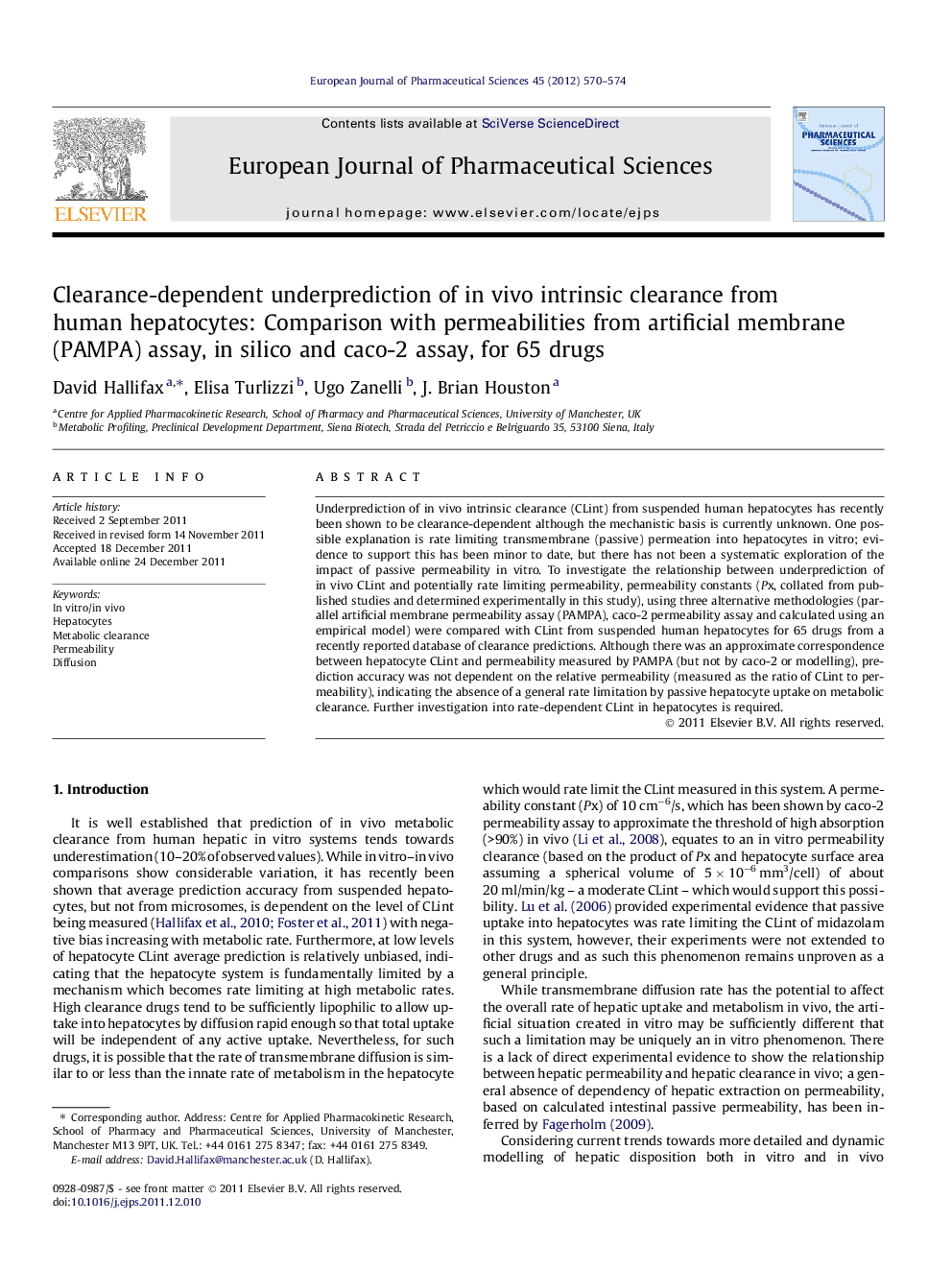| Article ID | Journal | Published Year | Pages | File Type |
|---|---|---|---|---|
| 2481238 | European Journal of Pharmaceutical Sciences | 2012 | 5 Pages |
Underprediction of in vivo intrinsic clearance (CLint) from suspended human hepatocytes has recently been shown to be clearance-dependent although the mechanistic basis is currently unknown. One possible explanation is rate limiting transmembrane (passive) permeation into hepatocytes in vitro; evidence to support this has been minor to date, but there has not been a systematic exploration of the impact of passive permeability in vitro. To investigate the relationship between underprediction of in vivo CLint and potentially rate limiting permeability, permeability constants (Px, collated from published studies and determined experimentally in this study), using three alternative methodologies (parallel artificial membrane permeability assay (PAMPA), caco-2 permeability assay and calculated using an empirical model) were compared with CLint from suspended human hepatocytes for 65 drugs from a recently reported database of clearance predictions. Although there was an approximate correspondence between hepatocyte CLint and permeability measured by PAMPA (but not by caco-2 or modelling), prediction accuracy was not dependent on the relative permeability (measured as the ratio of CLint to permeability), indicating the absence of a general rate limitation by passive hepatocyte uptake on metabolic clearance. Further investigation into rate-dependent CLint in hepatocytes is required.
Graphical abstractFigure optionsDownload full-size imageDownload high-quality image (79 K)Download as PowerPoint slide
